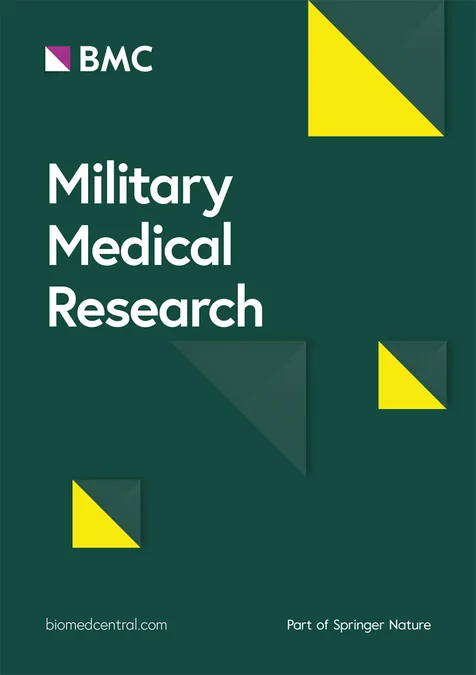
FOXO1-Expressing Neutrophils: The Surprising Truth Behind Their Role in Traumatic Brain Injury
2024-09-19
Introduction
Traumatic brain injury (TBI) is a silent epidemic, contributing to an alarming 69 million new cases worldwide each year. This condition poses severe health risks, especially among military personnel, who encounter unique challenges from combat-related injuries. Despite significant advancements in acute care, our understanding of the long-term consequences of TBI remains fragmented.
Groundbreaking Findings
A recent groundbreaking study led by Zhou et al. has uncovered the unexpected role of a specific subset of neutrophils in the context of TBI. Neutrophils, which are the body's first line of defense against pathogens, are crucial during the initial stages of TBI. They invade the damaged brain tissue to clear debris and kickstart repair processes. However, these immune cells can also wreak havoc if they are excessively activated or persist for too long.
The Role of FOXO1 in Neutrophils
This newly discovered subset of neutrophils is characterized by increased expression of the transcription factor known as FOXO1. Surprisingly, these FOXO1-high neutrophils do not fade away as previously thought; they linger in the brain during the transition from acute to chronic phases of TBI. This persistence may worsen cerebral damage in the short term and disrupt iron balance with oligodendrocytes—which are vital for the production of myelin—in the long run, resulting in myelin loss and depressive symptoms.
Mechanisms of Action
Zhou et al. delved deeper, revealing how FOXO1 modifies neutrophil behavior. They found that FOXO1 enhances the anti-apoptotic properties of neutrophils and increases the production of interleukin-6, a key inflammatory cytokine. Additionally, FOXO1 drives a metabolic change in these neutrophils, shifting their energy production from glycolysis to aerobic oxidation. This metabolic shift likely extends the life of these neutrophils and modifies their functions, consequently contributing to the ongoing pathogenesis of TBI.
Implications for Treatment
Neutrophils are not villains in this narrative; they still carry out essential functions such as defending against pathogens and aiding in wound healing. Hence, therapeutic approaches must find the balance to mitigate the deleterious effects of FOXO1-high neutrophils without stripping away their protective capabilities. This could lead to the development of targeted treatments that focus on specific pathways involved in these immune responses.
Broader Impact
The study's implications are extensive, hinting at the potential for new treatments not just for TBI but across various neuroinflammatory disorders, including multiple sclerosis and stroke. Such revelations warrant a fresh look at the role neutrophils play in neurological diseases, paving the way for innovative immunomodulatory strategies.
Future Research Directions
However, essential questions linger. What triggers FOXO1 expression in neutrophils post-TBI? Why do these cells continue to infiltrate the injured area during the chronic phase? Answering these questions is critical as researchers look to translate findings into clinical applications.
Conclusion
The findings from Zhou et al. set the stage for developing therapies that could redefine TBI management, both in military settings and civilian healthcare. Personalized treatment based on individual neutrophil profiles may lead to better outcomes in reducing acute neuroinflammation and long-term neurological damage.
Looking Ahead
Challenging pre-existing notions and embracing a more nuanced understanding of immune responses could lead to breakthroughs in how we treat TBI and other neurological conditions. By harnessing the power of FOXO1-high neutrophils, medical science may soon be able to turn the tide in this ongoing battle against brain injuries, offering new hope for countless lives affected by TBI.
Stay Tuned
Stay tuned for more updates on this field of research as scientists continue to explore the fascinating world of neuroinflammation and its implications for health management!


 Brasil (PT)
Brasil (PT)
 Canada (EN)
Canada (EN)
 Chile (ES)
Chile (ES)
 España (ES)
España (ES)
 France (FR)
France (FR)
 Hong Kong (EN)
Hong Kong (EN)
 Italia (IT)
Italia (IT)
 日本 (JA)
日本 (JA)
 Magyarország (HU)
Magyarország (HU)
 Norge (NO)
Norge (NO)
 Polska (PL)
Polska (PL)
 Schweiz (DE)
Schweiz (DE)
 Singapore (EN)
Singapore (EN)
 Sverige (SV)
Sverige (SV)
 Suomi (FI)
Suomi (FI)
 Türkiye (TR)
Türkiye (TR)